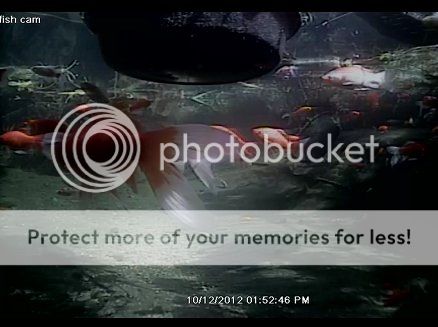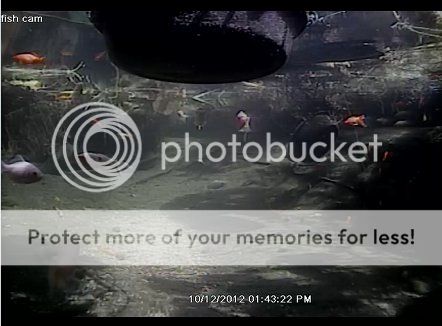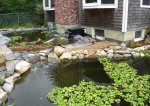There's no specs on bogs that I know of. For example I don't know of anyone ever testing different cogfigurations. Most people will just say "this is how I built mine". But I think you can tweak it for how you want it to work for you and the available space.
1. How deep should it be? I figured 2 ft should work but if deeper or shallower is better I don't mind.
Can be as little as 4-6" or as deep as you like. Factors to consider... Adding plants? In pots? make sure it's deep enough to cover a 15 gal pot I'd say. Because you might want to clean it out some day the more shallow the easier the shoveling. I think really deep bogs don't really use all of the bog. Water will take the shortest path it can and even with complex diffuser piping water with still pretty much go where it wants. So a long bog that's say 1' wide and 6" deep will be more fully utilized than a cube shape.
2. Do I fill it with pea gravel completely? Or do I make a shelf so it is only at the top?
Filled completely. You can choose to almost fill it and even mound gravel in the middle if you like for some plants. Don't know what you mean by a shelf.
3. How do you clean it? Do you even need to?
Generally they are never cleaned, but that's your choice on what you want. Initially when clean a bog is a very good bio filter. As muck collects its function as a bio filter decreases. As collected muck breaks down it releases DOC and other less than good things into the water. At some point all the open space in the gravel will be filled with muck and water will only run across the surface. Plants will love that but the plants will pull virtually all food from the muck, not the water, so little filtering.
Has to be your call on what point you wanted to clean it. They all fill with muck at different rates, so there's no set time period. Bur in general...If you wanted it to act as a bio filter you might have to clean it every few days so you'd want to design something easy to clean. When run like that it would be more of a gravel filter which people used years ago and stopped because cleaning was hard. If you wanted it to act as a veggie filter you could clean it a couple of times a year.
But I'd say the basic concept of a bog is that it's never cleaned. It can take 3, 5,10, 15 years for one to completely fill with muck. So most people running bogs have never had the experience. People move, design the pond, etc., before the bog is clogged.
4. Should I put a solids settling filter before the bog since I will not be able to put a back flush on the bog? (55 gallon drum upflow skippy filter that has a backflush)
Any organic matter you stop from going into a bog is going to increase the time before it clogs.
Backflushing a bog isn't really possible. At best you can drain out some dirty water. For any filter to actually backflush the media has to be bounced around to break up the clogs. Not really possible with gravel on the scale of a bog.
5. Is 2,000 gph an appropriate flow rate for a bog?
Depends on the bog. However most bogs can take a huge flow because there are no pipe restrictions, assuming the bog overflows into the pond. You only have to make sure the overflow is wide and deep enough. But pretty easy to make that handle 10,000, 20,000, 50,000 GPH ...huge. There can be issues with water running across the top of the gravel depending on the shape of the bog, flow and location of in and outputs however. But it still "works".
Those are my main questions that are coming to mind right now. My pond is 2,000 gallons with a surface area of around 108 square feet, the bog will be 7 ft by 4 ft. My Koi load is going to be on the heavier side since I have a tendency to overstock. I have a serious pea soup algae problem, so a strong performing bog is my number one concern, especially since it will be my only filter.
That could be a problem. Bogs are great filters on the right pond. Lighter the fish load the more a appropriate a bog. Most light fish load ponds don't require any bio filter, the pond pipes, etc., are enough. Heavier the fish loads the more bio filtering is needed to keep fish alive. And every range in between.
I don't know what your fish load actually is so no idea on what you might need. When someone says 2000 gal, followed by Koi, followed by heavy...I start to think a serious filter system might be needed.
BTW, I'm not sure if you know this or not but the algae making the green water consume ammonia directly, so you probably have zero ammonia, and very low nitrate too. The algae is your current bio filter, and it's a very good bio filter. If you do anything to clear the water you might want to test ammonia often, like everyday, for awhile to make sure you don't have trouble.




